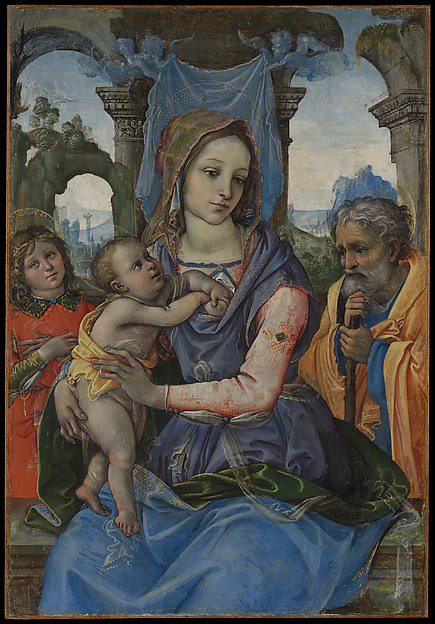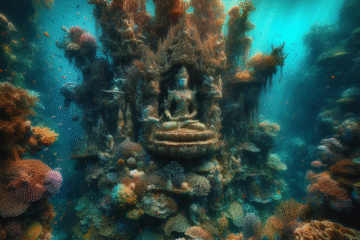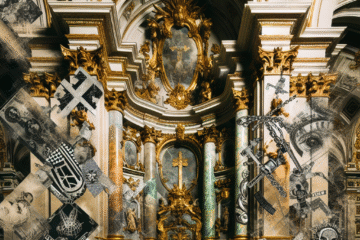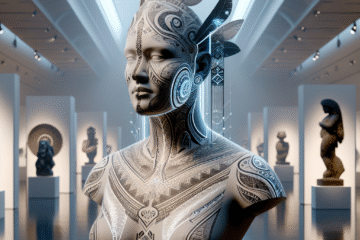
Image title: Holy Family with an Angel
Medium: Tempera on canvas, transferred from wood
Date: ca. 1490
Source:
The Met Collection
Introduction: When Machines Dream in Color
Art has always moved in tandem with its times, reflecting both cultural tides and technological revolutions. Today, one of the most compelling dialogues in contemporary art involves artificial intelligence—particularly neural style transfer (NST). This algorithmic technique allows machines to remap the style of one image onto the content of another, producing outputs that are often strange, dreamlike, and uncannily beautiful. But what do these machine-generated images signify? Are they merely aesthetic playthings of a digital era, or do they hint at the resurgence of surrealism through the lens of code?
By examining key moments in the history of visual art, we can place neural style transfer within a broader trajectory of image-making practices. From surrealist automatism to the dematerialized aesthetics of the digital age, NST occupies a curious space—a dream rendered not by the subconscious, but by a neural network.
Chapter 1: Surrealism and the Mind’s Eye
In the early 20th century, surrealism exploded as a radical response to the disillusionment following World War I. Founded in part on Freud’s psychoanalysis and the power of dreams, surrealist art sought to plumb the depths of the unconscious mind. Artists like Salvador Dalí, Max Ernst, and André Breton embraced methods like automatic writing and chance-based image creation, aiming to bypass rational thought to reach deeper truths.
Surrealists pursued a rupture from representation, crafting images that fused familiar elements in irrational, uncanny juxtapositions. This approach offered both critique and liberation—a portal not just to inner psychology but to alternative ways of perceiving reality. The concept of ‘automatism’, or surrendering conscious control to let the subconscious manifest, is of particular relevance when considering today’s automatically generated NST imagery.
Chapter 2: From Pigment to Pixel—The Digital Turn
As the twentieth century progressed, the materiality of art itself began to shift. With the birth of computing, artists in movements like Fluxus, Conceptual Art, and eventually New Media began to embrace the immateriality of digital processes. Manfred Mohr and Vera Molnár pioneered algorithmic art with early computers, treating code as both brush and canvas.
Where surrealists sought to visualize the unconscious mind, digital artists started exploring systems, randomness, and automation. The arrival of personal computing tools in the 1980s and 90s further democratized digital art, paralleling the surrealists’ own mission to challenge elite institutions. Still, these early digital works often lacked the almost mystical emotional depth that surrealism infused into its implausible visual worlds.
Chapter 3: Neural Style Transfer—Mechanized Dreams
Neural Style Transfer emerged from the field of deep learning in the 2010s. Essentially, it enables an AI to extract the content of one image (say, a photograph) and re-render it in the style of another (for instance, Van Gogh’s Starry Night). Artists and technologists alike were captivated by what this fusion could yield. The process imitates a kind of metamorphosis—endowing content with a completely different aesthetic structure.
Initially hailed as a breakthrough in artistic AI, NST-created works often resembled hallucinations: edges melt, forms bend, and colors swirl in unlogical directions. This dreamlike, liminal aesthetic inevitably invites comparisons with surrealism. But the impulse here is not subconscious expression—rather, it is algorithmic interpolation. What we witness is not the mind stepping outside reason, but the machine navigating statistical boundaries between known visual parameters.
Chapter 4: Philosophies of Authenticity and Creativity
This raises critical questions about authorship, intention, and creativity. Are these images truly ‘art,’ or are they computational artifacts? Philosophically, surrealism was rooted in revealing hidden truths—the defamiliarization of the real, shocking people into new awareness. Meanwhile, neural style transfer operates without intention or awareness, producing beauty absent the human agony or insight normally associated with visionary worlds.
However, like the surrealists’ embrace of chance and collage, NST embraces unpredictability. The tool can become sublimely expressive in the hands of an artist who curates, edits, and reuses its outputs purposefully. In this way, the human-machine partnership offers a new model for co-creation, blurring lines not only between styles but between artist and tool, vision and algorithm, input and output. This too shares a kinship with the surrealist desire to dissolve boundaries between conscious and unconscious operations.
Chapter 5: Toward a New Movement?
If neural style transfer is not quite a digital surrealism reborn, it may still herald a parallel movement: Digital Surrealism. This isn’t simply about aesthetics—it’s about a shift in ontological perspective. Instead of dreams from the human unconscious, we are now seeing the dreams of machines—filtered through neural networks, training sets, and probabilistic prediction. It’s a surrealism not of psychological depths, but of data recombination.
Artists like Refik Anadol and Anna Ridler are pushing these technologies into more expansive, poetic realms. They use AI not only to mimic style but to explore memory, identity, and alternate modes of perception. These works compel us to rethink creativity in an age where tools can seem to think—and dream—on their own.
Conclusion: The Algorithmic Sublime
Neural style transfer may be more than a digital gimmick—it may signal a profound philosophical transformation. It offers a method of image creation that echoes surrealist tendencies while introducing an alien mode of dreaming. As we peer into the swirling abstractions generated through machine vision, we confront not just a new way of seeing, but perhaps a new kind of seer. Is this not, in essence, the very territory surrealism always sought to explore?

Image description:
A ChatGPT 1.5 “translation” of Gen. 1.6 (RSV) from English to Lojban and (in a new chat) back into English, producing a surreal result. Identical prompts generate differing results which can bear more, little, no relationship to the semantics of the original text.
License:
Public domain
Source:
Wikimedia Commons


